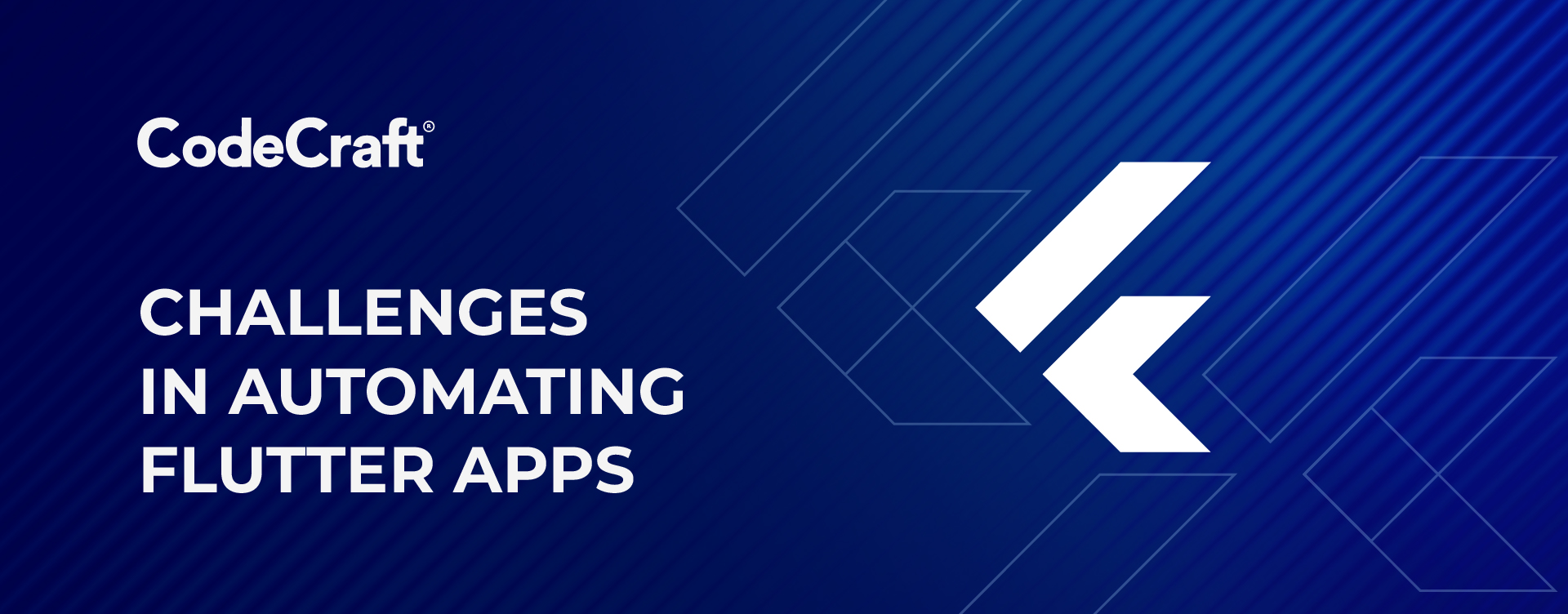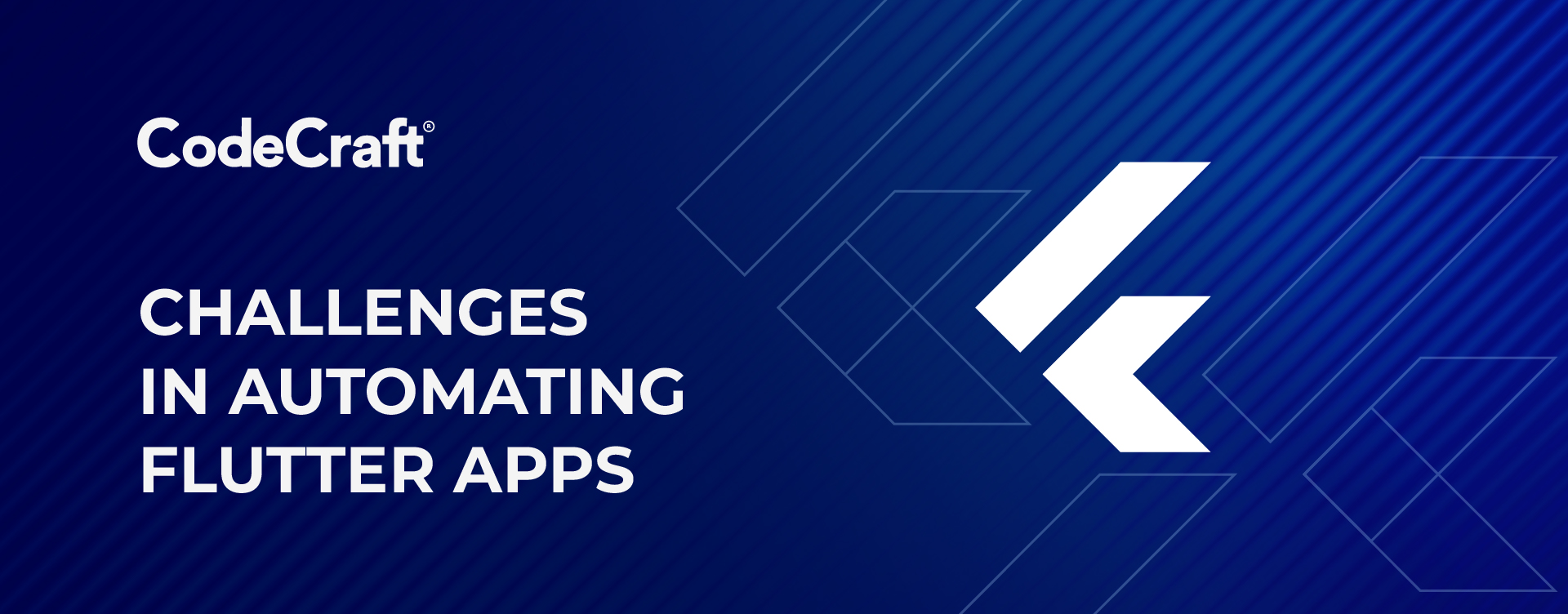Flutter changed how we build apps, and it was time for our automation to catch up.
By Ostan Dsouza | Sept 23, 2025

When we first embraced Flutter, we knew it would reshape how we built apps. But as QA engineers, we quickly realized that testing Flutter apps was not as straightforward as testing native ones. Our existing automation setup, which had worked beautifully for years, suddenly felt inadequate. This blog is a look back at the challenges we faced, the experiments we ran, and how we gradually found solutions that worked for us.
Why Test Automation Matters?
Flutter’s cross-platform nature is both a strength and a challenge for QA teams. Even with a single codebase, issues may appear differently on Android and iOS, making cross-platform testing vital. As Flutter evolves rapidly, each update brings new features and performance boosts but also potential regressions. Continuous regression testing is therefore essential to maintain stability and quality.
Manual testing can’t match Flutter’s rapid development pace. Frequent releases need faster validation, and without automation, QA becomes a bottleneck. Relying only on manual testing leads to delays, higher costs, and more defects. Automation is essential to maintain speed, ensure quality, and scale testing efficiently across platforms.
That’s why we shifted our focus to automating our Flutter application. However, the journey proved far from straightforward. At the start, many tools and frameworks promised quick setup and easy execution. They looked great on paper, but reality told a different story. We tested multiple options, evaluated their actual capabilities, and quickly realized that choosing the right tool for Flutter automation required more than just running tests—it demanded a reliable, long-term solution capable of handling Flutter’s unique challenges.
How we started automating flutter apps?
We started our mobile automation journey with the obvious choice of Appium. When we first set up our Appium framework, we relied on the tried and tested legacy drivers XCUITest for iOS and UIAutomator2 for Android. For traditional native mobile applications, this setup served us well. We could inspect elements, build reliable locators, and automate end-to-end scenarios without much friction. But the landscape shifted dramatically once we started working with Flutter applications.
One of the earliest and most frustrating challenges came with Appium Inspector. While it could easily parse and display native views, it failed miserably when it came to Flutter’s widget tree. Flutter doesn’t render its UI using the standard native components that XCUITest or UIAutomator2 are built to recognize. Instead, it uses its own custom rendering engine, which means the entire widget hierarchy is abstracted away from standard automation tools.
Major consequences?
Our inspector could barely “see” the application. We couldn’t explore the complete widget hierarchy, making it incredibly difficult to understand the structure of the app during test creation. Locating elements became guesswork rather than a systematic process. Unlike native apps where you can tap into accessibility IDs, class names, or text attributes, Flutter widgets offer no such direct visibility. This lack of access to widget properties and internal states quickly became a major blocker for E2E automation. Ultimately, what had once been a solid automation framework turned into a severe limitation, leaving us with gaps in coverage, unreliable tests, and growing frustration within the QA team.
What is flutter automation?
Flutter automation refers to the collection of frameworks, tools, and techniques specifically designed to test applications built with the Flutter SDK. Since Flutter apps are rendered using their own custom engine, traditional automation approaches often fall short. This has led to the evolution of dedicated solutions, which can broadly be categorized into two groups: Native Flutter solutions and Appium-based solutions.
Native Flutter Solutions
- flutter_driver: This was the first official testing tool introduced by the Flutter team. It allowed teams to write end-to-end tests in Dart, Flutter’s own programming language. While powerful at the time, it had limitations in terms of maintainability and debugging. Over time, it was deprecated in favor of a more stable alternative.
- integration_test: The official replacement for flutter_driver, this package provides better integration with the Flutter app lifecycle and a more reliable API surface. It allows for writing tests directly in Dart and runs them within the app itself, making it a solid choice for teams comfortable with writing tests in the same language as their app development.
Appium-based Solutions
- Appium Flutter Driver: Built on top of the now-deprecated flutter_driver, this approach allowed teams to leverage the Appium ecosystem—meaning tests could be written in multiple languages such as Java, Python, JavaScript, or Ruby. This was a big win for teams already invested in Appium, but it inherited many of the limitations of its underlying flutter_driver.
- Appium Flutter Integration Driver: The latest evolution in this space, this driver is built on top of Flutter’s integration_test package rather than the old flutter_driver. This gives it a more stable foundation, better long-term support, and the added advantage of testing hybrid apps (where Flutter is combined with native views). It represents the most future-proof way to bring Appium’s cross-language flexibility into Flutter testing.
Flutter automation has come a long way from early Dart-only tools to a mature ecosystem that now offers both native support and Appium-based flexibility. Choosing the right approach depends on your team’s skills, tech stack, and whether you prefer to keep everything native to Flutter or bring it under Appium. For us, the decision wasn’t instant. We spent time exploring the options, building expertise, and testing what worked best. Eventually, we chose the tool that felt most natural and easy for our team to adopt. But the journey didn’t end there. We faced plenty of challenges along the way, which we’ll share in our next blog.
Closing thoughts
Flutter automation poses unique challenges, as traditional tools struggle with its rendering engine and widget tree. Teams can use Flutter-specific tools like integration_test or Appium-based drivers, depending on skills and long-term goals.
At the end of the day, Flutter automation isn’t just about keeping pace with development it’s about giving QA teams the power to release faster, minimize risks, and deliver smooth user experiences across platforms. By choosing the right tools now, organizations can scale their Flutter apps with confidence, without sacrificing quality for speed.
This was just the beginning of our Flutter automation story !!
In the next part of this series, we’ll dive into the challenges we faced and how we overcame them. Stay Tuned…….


 Banking
Banking
 Healthcare
Healthcare
 Energy
Energy
 Manufacturing
Manufacturing
 Education
Education
 Highlights
Highlights
 Blogs
Blogs
 Whitepapers
Whitepapers
